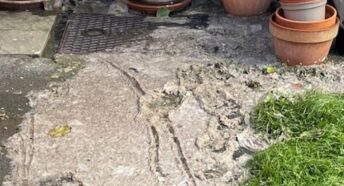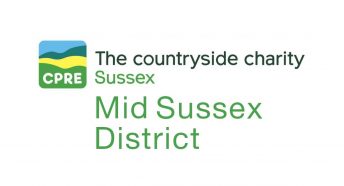CPRE Sussex responds to Defra Net Gain consultation
Volunteers from CPRE Sussex prepared a response to the Defra consultation about providing a ‘net gain’ in biodiversity for new developments. Biodiversity net gain is an approach which aims to leave the natural environment in a measurably better state than beforehand.
Our key concerns are;
- The Defra metric: Much of this proposal relies on the effectiveness of the Defra metric for measuring both baseline data and net gain levels required. We agree that there needs to be a common approach but it is clear from the consultation document that this is a ‘work in progress’. We support the approach suggested that the metric should evolve in the light of practical experience so that we achieve a valid measure of net gain which is transparent and relevant to what we are trying to achieve. i.e. genuine and lasting gains in biodiversity and habitat. The development of the metric needs to ensure that a much wider range of species are considered, not just legally protected species, and that it achieves a wider landscape perspective.
- Approaches to delivering net gain: We are concerned that there seems to be an acceptance (pg23) that irreplaceable habitats may be damaged in development activities. Although the document talks about ‘last resort’ compensation schemes, there needs to be stronger protection for certain habitats. We do not want a regime that allows serious environmental damage as long as compensation is paid. The process needs to consider the impact on peripheral wildlife species which may be dependent on the land in question, such as the importance of hunting habitat for mammals, birds of prey etc. Small, isolated areas of protection are not self-sustainable.
- Developments where there are no opportunities for net gain: use of tariffs We are concerned about the concept of using tariffs or purchase of units where no opportunities for gain are apparent. There is a real danger that such a system may be seen as an easy way of buying out the responsibilities of net gain. In practice there will be some environmental gains that can be achieved in almost any location, such as built-in bird and bat boxes and probably some limited planting. It is potentially too easy for developers to claim that nothing can be done on a particular site and buy their way out of their responsibilities. Any net gain that can be achieved must be a requirement. Please see our answers to Questions 13, 22 23, 31, 32,33.
- Biodiversity/ecological assessments: A major issue here is ‘who does these assessments’? We do not believe we can leave developers to do them, as often happens now, without some form of objective quality control/verification. Similarly, as the document states, most planning authorities do not have their own ecologists. There needs to be a scheme for approving ecologists as having the necessary understanding of the metrics and to be of an independent status. Transparency for all parties relies on the data being correctly collected and the metrics correctly applied. Please see our answers to Questions 2,6,15,43. Partnership Working: This proposal is a wonderful opportunity to establish a high quality approach to biodiversity in local planning through partnership arrangements. These would include the planning authority, the developer/builder but also national, regional and local environmental organisations who have huge knowledge and expertise. Whilst we appreciate the desire not to introduce unnecessary delays into the process, such partnerships are a very transparent and valuable way to acquire information, knowledge and expertise about a specific location. Use of partnerships will also be seen by local people and all interested parties as a clear and transparent approach to baseline and net gain assessments. Please see our answers to Questions 14,17,20,21,26,27,31,32,43,44.
- Protected Species: Biodiversity gain is not just about protected species. There are many declining and ‘at risk’ species that do not have statutory protection but which need to be given very high profile in any net gain process. There are also many more common species which may become endangered if we do not protect and enhance ‘everyday’ natural habitats. This is not just about great crested newts!
- Monitoring of Net Gain: It is essential, if this process is to succeed, and be seen to succeed, that a strong, independent monitoring process is in place. Without this, net gain is in danger of becoming a box-ticking exercise rather than a meaningful process of enhancing biodiversity and habitat. The monitoring also needs to take place over an extended period to demonstrate that the net gain is a sustainable one. If net gain is not sustained then a process needs to be in place to enable further action to be taken to restore a net gain. Please see our answers to Questions 24, 25, 26, 27, 43, 44.
- Measures that will contribute to net gain: To assist the parties to achieve a net gain in biodiversity, it will be important to provide practical advice to set out the type of measures needed to be put in place, which will have to be part of the initial planning process. CPRE Sussex is about to launch a document to help with this aspect. It has been produced in conjunction with RSPB (South East) and Sussex Wildlife Trust and we plan to use this locally in the first instance to encourage planning authorities and developers towards a net gain culture.
You can download our full response below:





